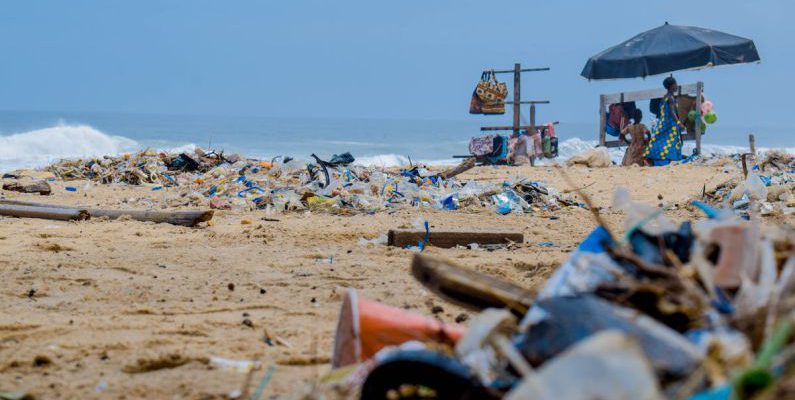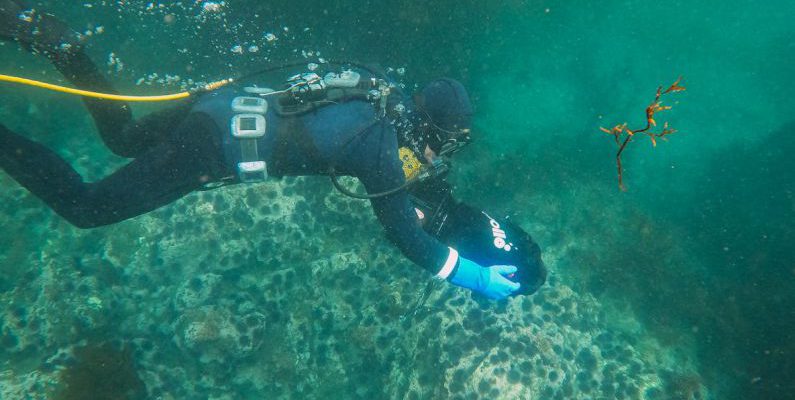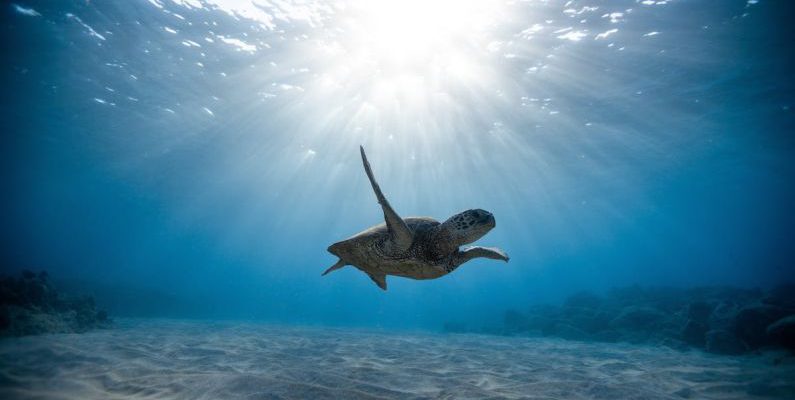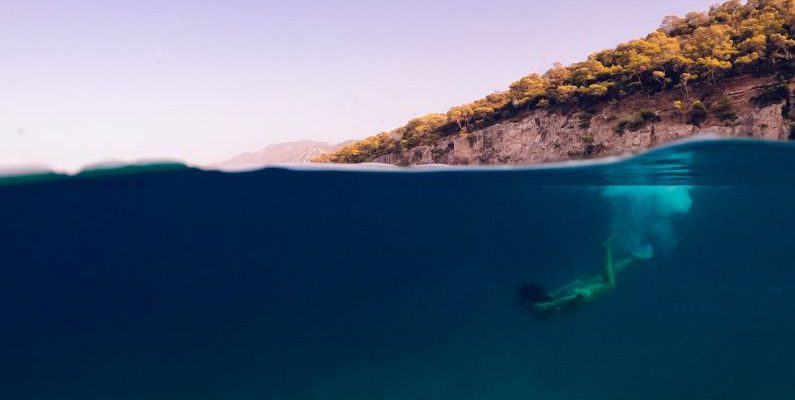When we think of marine life, majestic whales, colorful coral reefs, and playful dolphins often come to mind. However, there is a group of organisms that play a crucial role in the ocean ecosystem but often go unnoticed - plankton. These tiny organisms, consisting of phytoplankton and zooplankton, are the unsung heroes of marine life, supporting the entire ocean food web and contributing significantly to the health of our planet's oceans.
Author: diveholidayisle
In Gear Reviews
When it comes to diving equipment, finding the right pair of fins is crucial for a comfortable and efficient underwater experience. The Cressi Gara Modular fins are a popular choice among divers, known for their quality construction and performance in the water. In this review, we will delve into the features, design, and overall performance of the Cressi Gara Modular fins to help you determine if they are the right fit for your diving needs.
Design and Construction
The Cressi Gara Modular fins are crafted with high-quality materials that prioritize both durability and flexibility. The fins feature a modular design, allowing divers to interchange the blades to customize their performance based on their diving preferences. This innovative design aspect sets the Cressi Gara Modular fins apart from traditional fins on the market, providing users with versatility and adaptability. The blades of the Cressi Gara Modular fins are constructed from a special techno-polymer material that ensures optimal responsiveness and efficiency in the water. The blades are designed with a slightly negative buoyancy, which aids in reducing leg fatigue and increasing overall propulsion during dives. Additionally, the foot pockets are made from soft and comfortable rubber, providing a snug fit that enhances energy transfer from the legs to the blades.Performance in the Water
One of the standout features of the Cressi Gara Modular fins is their exceptional performance in the water. The modular design allows divers to easily swap out blades to suit different diving conditions, whether it be for spearfishing, freediving, or general recreational diving. The fins provide a good balance between power and efficiency, allowing divers to move effortlessly through the water with minimal effort. The blades of the Cressi Gara Modular fins are designed to deliver maximum thrust with each kick, making them ideal for divers looking to cover long distances or navigate strong currents. The slightly negative buoyancy of the blades helps to maintain a streamlined body position, reducing drag and enhancing overall hydrodynamics. Whether you are a beginner or an experienced diver, the Cressi Gara Modular fins offer a level of performance that is sure to impress.Comfort and Fit
Comfort is key when it comes to choosing diving fins, and the Cressi Gara Modular fins excel in this aspect. The soft rubber foot pockets provide a comfortable and secure fit, preventing chafing and discomfort during extended dives. The ergonomic design of the foot pockets ensures that the fins stay in place, even during rapid movements or strong currents. The adjustable heel straps of the Cressi Gara Modular fins allow for a customized fit that accommodates a wide range of foot sizes. This feature is particularly beneficial for divers who struggle to find fins that fit comfortably. Additionally, the ergonomic shape of the foot pockets helps to reduce fatigue and cramping, allowing divers to enjoy longer dives without experiencing discomfort.Verdict: Are the Cressi Gara Modular Fins Worth It?
In conclusion, the Cressi Gara Modular fins are a top-tier option for divers seeking a versatile and high-performance fin. The innovative modular design, coupled with the quality construction and excellent performance in the water, make these fins a worthy investment for both beginners and experienced divers alike. If you are looking for fins that offer a perfect balance of power, efficiency, and comfort, the Cressi Gara Modular fins are definitely worth considering for your next diving adventure.
Planning for a dive vacation can be an exciting time as you prepare to explore the wonders of the underwater world. However, packing efficiently for such an adventure is crucial to ensure you have everything you need while keeping your luggage light and manageable. By following these tips and tricks, you can streamline your packing process and make the most of your dive vacation without any unnecessary stress.
Choosing the Right Gear
When packing for a dive vacation, selecting the right gear is essential. Make a list of the equipment you will need based on the dive sites you plan to visit and the activities you intend to participate in. Essential items include your mask, snorkel, fins, wetsuit, regulator, BCD, dive computer, and underwater camera if you wish to capture your underwater memories. It is advisable to pack your dive gear in a sturdy and waterproof bag to protect it during travel. Additionally, check the baggage allowance and restrictions of your airline to avoid any surprises at the airport. Some airlines may have specific rules regarding the transportation of dive equipment, so it is best to be informed in advance.Clothing and Personal Items
When it comes to clothing for a dive vacation, pack light and versatile pieces that can easily be mixed and matched. Opt for quick-drying fabrics that are suitable for both diving and casual wear. Include swimwear, cover-ups, shorts, t-shirts, and a light jacket for cooler evenings. Don't forget to pack a hat, sunglasses, and sunscreen to protect yourself from the sun's rays. Remember to pack personal items such as toiletries, medications, and travel documents in a separate bag for easy access. Consider bringing a small first aid kit with essentials like bandages, antiseptic wipes, and seasickness medication just in case.Organizing Your Essentials
To pack efficiently for a dive vacation, consider using packing cubes or compression bags to maximize space in your luggage. Roll your clothes instead of folding them to save space and prevent wrinkles. Place heavier items at the bottom of your bag to distribute weight evenly and make it easier to carry. Keep your dive gear together in one section of your bag to stay organized and prevent items from getting lost. Use mesh bags to separate wet gear from dry items and prevent moisture from spreading. Packing a small dry bag for electronics and valuables is also a smart idea to protect them from water damage.Additional Tips for a Stress-Free Dive Vacation
Before you depart for your dive vacation, double-check your equipment to ensure everything is in working order. Consider packing a spare mask strap, O-rings, and other small accessories that could come in handy during your trip. Label your gear with your name or initials to avoid mix-ups with other divers. Research the dive destination ahead of time to familiarize yourself with local diving conditions, marine life, and any specific regulations that may apply. Stay informed about weather forecasts and pack accordingly to be prepared for any changes in conditions.Conclusion: Dive into Adventure
Packing efficiently for a dive vacation is all about careful planning and organization. By choosing the right gear, packing smartly, and staying prepared, you can make the most of your underwater adventure without any unnecessary hassle. Follow these tips to streamline your packing process and dive into your vacation with confidence and excitement.
Scuba diving is a thrilling and captivating activity that allows divers to explore the mesmerizing underwater world. However, as with any sport, diving comes with its risks and challenges, particularly when it comes to ear problems. Preventing and treating ear issues while diving is crucial to ensuring a safe and enjoyable experience underwater.
Understanding the Ear
Before delving into how to prevent and treat ear problems while diving, it is essential to understand the basic anatomy of the ear and how it functions. The ear is a complex organ that consists of three main parts: the outer ear, middle ear, and inner ear. The outer ear collects sound waves and channels them into the ear canal, where they reach the eardrum in the middle ear. The middle ear contains the ossicles, which transmit sound vibrations to the inner ear. The inner ear is responsible for processing these vibrations into electrical signals that are sent to the brain for interpretation.Equalizing Pressure
One of the most common ear problems experienced by divers is barotrauma, which occurs when there is a difference in pressure between the middle ear and the surrounding environment. This pressure difference can cause discomfort, pain, and even injury to the eardrum. To prevent barotrauma, divers must equalize the pressure in their ears regularly while descending and ascending. Equalizing the pressure in the ears can be achieved by performing the Valsalva maneuver, which involves gently blowing air through the nose while pinching the nostrils closed. This maneuver helps to open the Eustachian tubes, which connect the middle ear to the back of the throat, allowing air to flow in and out of the middle ear and equalizing the pressure.Ear Protection
In addition to equalizing pressure, divers can prevent ear problems by protecting their ears from irritants and contaminants in the water. Wearing earplugs or a hood can help to keep water out of the ears and reduce the risk of developing infections or inflammation. It is crucial to ensure that ear protection gear fits properly and is comfortable to wear for extended periods underwater.Seeking Medical Attention
Despite taking preventive measures, ear problems can still occur while diving. If a diver experiences persistent pain, discomfort, or hearing loss in the ears, it is essential to seek medical attention immediately. Ignoring ear problems can lead to complications and potentially permanent damage to the ears.Treatment Options
When it comes to treating ear problems while diving, there are several options available depending on the specific issue. For minor ear pain or discomfort, divers can try using over-the-counter ear drops to alleviate symptoms. These drops can help to reduce inflammation, relieve pain, and promote healing in the ears. In cases of more severe ear problems such as barotrauma or ear infections, divers may require medical intervention from an otolaryngologist or ear, nose, and throat specialist. Treatment options may include antibiotics, ear tube placement, or other surgical procedures to repair damaged ear structures.Preventive Measures
Prevention is always better than cure when it comes to ear problems while diving. Divers can take several precautions to minimize the risk of developing ear issues during their dives. These include:- Ensuring proper equalization techniques are employed during descent and ascent
- Using appropriate ear protection gear such as earplugs or hoods
- Avoiding diving with congested sinuses or allergies that can affect the Eustachian tubes- Seeking medical clearance from a physician before engaging in diving activities
Conclusion: Ensuring Ear Health for Safe Diving
Maintaining ear health is crucial for safe and enjoyable diving experiences. By understanding the anatomy of the ear, practicing proper equalization techniques, using ear protection gear, and seeking medical attention when needed, divers can prevent and treat ear problems effectively. Remember, healthy ears are essential for exploring the wonders of the underwater world without any discomfort or hindrance.
When planning a dive trip, there are numerous factors to consider to ensure a safe and enjoyable experience. One critical aspect that often gets overlooked is the weather conditions at the dive destination. Weather plays a significant role in diving safety and can greatly impact your overall dive experience. From visibility to currents and marine life sightings, understanding and considering the weather conditions before embarking on a dive trip is essential for all divers.
Choosing the Right Season
Selecting the right season for your dive travel is crucial to ensure optimal diving conditions. Different locations have varying weather patterns throughout the year, affecting water temperature, visibility, and marine life activity. Researching the best time to visit a particular dive destination can make a significant difference in the quality of your diving experience. For instance, some destinations have a rainy season that may reduce visibility or create unsafe diving conditions. Planning your trip during the dry season can help you avoid these weather-related challenges and enjoy better diving conditions.Monitoring Weather Patterns
Before your dive trip, it is essential to monitor weather patterns at your destination. Checking the local weather forecast, wind conditions, and sea surface temperatures can give you valuable insights into what to expect during your dives. Sudden changes in weather can impact sea conditions, causing strong currents or rough seas, which may pose risks to divers. By staying informed about the weather conditions, you can plan your dives accordingly and make informed decisions to ensure your safety underwater.Visibility and Water Temperature
Weather conditions directly influence water visibility and temperature, two crucial factors that can affect the quality of your dives. Rainfall, wind, and ocean currents can impact visibility by stirring up sediment and reducing the clarity of the water. Similarly, water temperature can vary depending on the weather, with colder temperatures affecting marine life behavior and divers' comfort levels. Understanding how weather conditions influence visibility and water temperature can help you prepare for your dives and choose the right gear to ensure a comfortable and enjoyable experience underwater.Safety Considerations
Weather conditions play a significant role in diving safety, and being aware of potential risks is essential for all divers. Strong winds, rough seas, and thunderstorms can create hazardous conditions for diving, increasing the likelihood of accidents or injuries. It is important to prioritize safety and avoid diving in adverse weather conditions, even if it means rescheduling or canceling your dives. By staying vigilant and monitoring weather updates, you can make informed decisions to protect yourself and your dive buddies while exploring the underwater world.Adapting to Changing Conditions
Weather conditions can be unpredictable, and divers must be prepared to adapt to changing circumstances during their dive trips. If weather conditions deteriorate unexpectedly, it is essential to have a backup plan or alternative dive sites to ensure a safe and enjoyable experience. Flexibility is key when dealing with changing weather conditions, and being prepared to modify your dive itinerary can help you make the most of your trip while staying safe underwater.Conclusion: Planning Ahead for a Successful Dive Trip
In conclusion, considering weather conditions is essential for dive travel planning to ensure a safe and rewarding experience. By choosing the right season, monitoring weather patterns, and understanding how weather influences visibility and water temperature, divers can make informed decisions to optimize their dive trips. Prioritizing safety, adapting to changing conditions, and staying informed about weather updates are crucial steps in planning a successful dive adventure. Remember, weather conditions may vary, but with careful planning and preparation, you can enjoy unforgettable dives in some of the world's most spectacular underwater environments.
In Dive Sites
Nestled in the heart of the South Pacific Ocean lies French Polynesia, a paradise known for its crystal-clear waters, pristine beaches, and vibrant marine life. While this idyllic destination is renowned for its overwater bungalows and lush landscapes, one of the most captivating ways to explore the beauty of French Polynesia is through scuba diving. With its diverse underwater ecosystems, colorful coral reefs, and abundance of marine species, the underwater world of French Polynesia offers a truly unforgettable experience for divers of all levels.
Exploring Vibrant Coral Reefs
French Polynesia is home to some of the most spectacular coral reefs in the world, teeming with life and vibrant colors. From the shallow lagoons to the deep-sea walls, divers have the opportunity to witness an array of coral species, including delicate soft corals, massive hard corals, and intricate coral formations. The kaleidoscope of colors that adorn these reefs creates a mesmerizing underwater landscape that is truly a feast for the eyes.Encountering Marine Life
Diving in French Polynesia offers divers the chance to encounter a diverse array of marine life, from tiny critters to large pelagics. One of the most iconic marine species found in these waters is the graceful manta ray. Swimming alongside these majestic creatures as they glide effortlessly through the water is an experience that will stay with you long after you resurface. Other notable marine encounters include sharks, dolphins, turtles, and a variety of colorful reef fish.Diving with Sharks
For the more adventurous divers, French Polynesia offers the opportunity to dive with sharks in their natural habitat. The waters around the islands are home to several shark species, including blacktip reef sharks, lemon sharks, and even the elusive tiger shark. Shark diving experiences in French Polynesia are conducted in a safe and responsible manner, allowing divers to observe these apex predators up close while respecting their space and behavior.Exploring Wreck Sites
French Polynesia is not only home to vibrant coral reefs and diverse marine life but also boasts a number of fascinating wreck sites waiting to be explored. One of the most famous wreck dives in the region is the Rangiroa Lagoon, where divers can explore the remains of a sunken ship surrounded by abundant marine life. These underwater relics provide a glimpse into the region's rich maritime history and offer a unique diving experience for those seeking adventure beneath the waves.Experiencing Drift Dives
Drift diving is a popular activity in French Polynesia, thanks to the region's strong currents and underwater topography. Drifting along the reef walls while watching the marine life go about their daily routines is a thrilling and immersive experience for divers. The feeling of weightlessness as you glide effortlessly through the water, carried by the current, is both exhilarating and serene at the same time.Appreciating Conservation Efforts
As a popular diving destination, French Polynesia places a strong emphasis on marine conservation and sustainability. Local dive operators and organizations work tirelessly to protect the fragile marine ecosystems and educate divers about the importance of preserving the underwater environment. By diving responsibly and supporting these conservation efforts, visitors can help ensure that future generations will be able to experience the beauty of French Polynesia's underwater world.Embracing the Spirit of Adventure
Scuba diving in French Polynesia is not just about exploring the underwater world; it's about embracing the spirit of adventure and immersing yourself in the natural beauty that surrounds you. Whether you're a seasoned diver or a novice looking to take the plunge for the first time, the waters of French Polynesia offer an unparalleled diving experience that will leave you in awe of the wonders of the ocean. In conclusion, diving in French Polynesia is a truly magical experience that allows you to immerse yourself in a world of vibrant coral reefs, diverse marine life, and breathtaking underwater landscapes. Whether you're exploring wreck sites, diving with sharks, or simply drifting along the reef walls, the beauty of French Polynesia's underwater world is sure to captivate your senses and leave you with memories that will last a lifetime.
Exploring the underwater world can be an exhilarating and rewarding experience, but it's essential to prioritize safety when engaging in scuba diving. For those looking to enhance their skills and be prepared for emergency situations while diving, undergoing rescue diver training is a crucial step. This training equips divers with the knowledge and skills needed to assist others in distress, making it a valuable asset for anyone serious about diving. If you're considering enrolling in rescue diver training, here's what you can expect from the experience.
**Prerequisites for Rescue Diver Training**
Before enrolling in rescue diver training, individuals must meet certain prerequisites to ensure they have the necessary diving experience and skills. Typically, candidates must hold an advanced open water diver certification or equivalent, have completed a CPR and first aid training within the last two years, and have logged a minimum number of dives, often ranging from 20 to 50 dives. These prerequisites ensure that candidates have a solid foundation of diving knowledge and experience before embarking on rescue diver training.
**Classroom Instruction**
Rescue diver training typically begins with classroom instruction, where divers learn about dive theories, dive planning, dive tables, and dive safety protocols. In the classroom, instructors cover topics such as recognizing and managing stress in divers, responding to diving emergencies, and practicing self-rescue techniques. Divers also learn about equipment maintenance, emergency oxygen administration, and how to conduct rescue scenarios effectively.
**Skill Development in Confined Water**
After completing the classroom portion, divers move on to confined water sessions, where they practice and refine essential rescue skills in a controlled environment. In confined water, divers learn how to assist a distressed diver at the surface, perform rescue breaths, and tow an unresponsive diver to safety. These hands-on exercises help divers build confidence in their abilities and ensure they can effectively respond to emergencies underwater.
**Open Water Scenarios**
Once divers have mastered the necessary skills in confined water, they progress to open water scenarios to apply their knowledge in real-life diving situations. In open water, divers practice search and recovery techniques, conduct simulated rescue missions, and work together as a team to respond to various emergency scenarios. These scenarios challenge divers to think quickly, make decisions under pressure, and demonstrate their ability to handle complex rescue situations.
**Emphasis on Prevention and Preparedness**
While rescue diver training focuses on responding to diving emergencies, it also emphasizes the importance of prevention and preparedness. Divers learn how to recognize potential risks before they escalate into emergencies, conduct thorough dive briefings, and ensure that all divers in the group are aware of emergency procedures. By promoting a proactive approach to safety, rescue diver training helps divers prevent accidents and minimize the likelihood of emergencies occurring in the first place.
**Continuing Education and Practice**
Rescue diver training is not just a one-time course; it is an ongoing commitment to improving your skills and staying prepared for any diving situation. Divers are encouraged to continue their education by taking advanced courses, participating in rescue drills, and practicing their rescue skills regularly. By staying engaged and honing their abilities, divers can maintain their readiness to assist others in need and contribute to a safer diving community.
**Preparing for the Unexpected: The Value of Rescue Diver Training**
In the unpredictable underwater world, being prepared for the unexpected is essential for every diver. Rescue diver training provides divers with the knowledge, skills, and confidence to respond effectively to emergencies and assist others in distress. By undergoing rescue diver training, divers not only enhance their own safety but also contribute to a culture of preparedness and responsibility within the diving community. Whether you're a recreational diver looking to expand your skills or a professional diver seeking to advance your career, rescue diver training offers valuable insights and practical experience that can make a significant difference in your diving journey.
In Eco Diving
The Earth's oceans cover approximately 70% of the planet's surface and play a crucial role in sustaining life on Earth. However, these vast bodies of water are increasingly facing a significant threat—ocean pollution. Understanding the impact of ocean pollution on marine life is essential to address this pressing environmental issue and work towards protecting our oceans for future generations.
The Sources of Ocean Pollution
Ocean pollution is caused by various sources, including plastic waste, chemicals, sewage, oil spills, and agricultural runoff. Plastic pollution, in particular, poses a severe threat to marine life. Millions of tons of plastic waste end up in the oceans each year, harming marine animals through ingestion and entanglement. Chemical pollution from industrial activities and agriculture can also have devastating effects on marine ecosystems, leading to toxic algal blooms and disrupting the balance of marine food webs. Oil spills, whether from offshore drilling or shipping accidents, can have immediate and long-term consequences for marine life, causing widespread contamination and habitat destruction.The Impact on Marine Life
The impact of ocean pollution on marine life is profound and far-reaching. Plastic waste, for instance, can be mistaken for food by marine animals, leading to ingestion and potentially fatal consequences. Marine animals such as seabirds, turtles, and whales can become entangled in plastic debris, causing injuries and even death. Chemical pollution can affect the health and reproductive capabilities of marine species, leading to population declines and genetic abnormalities. Oil spills can coat marine animals in toxic substances, impairing their ability to regulate body temperature, breathe, and feed, ultimately leading to widespread mortality in affected populations.The Effects on Marine Ecosystems
Ocean pollution can have cascading effects on marine ecosystems, disrupting the delicate balance of life in the oceans. Plastic waste can accumulate in coastal areas and on the seabed, smothering marine habitats such as coral reefs and seagrass beds. Chemical pollution can contaminate water bodies, affecting the health of marine plants and animals and leading to the loss of biodiversity. Oil spills can have devastating effects on marine habitats, destroying important breeding grounds and feeding areas for a wide range of marine species. These disruptions to marine ecosystems can have long-lasting consequences, affecting the resilience and ability of marine ecosystems to recover from environmental stressors.Mitigation and Conservation Efforts
Addressing ocean pollution and its impact on marine life requires a concerted effort from individuals, communities, governments, and organizations. Efforts to reduce plastic waste, such as recycling, reusing, and reducing single-use plastics, can help prevent further pollution of the oceans. Stricter regulations on chemical discharge and agricultural runoff can help limit the contamination of marine ecosystems and protect vulnerable species. Improved response strategies to oil spills and better monitoring of shipping activities can help minimize the impact of oil pollution on marine environments.The Way Forward
Understanding the complex interactions between ocean pollution and marine life is essential to developing effective strategies for conservation and protection. By raising awareness about the threats posed by ocean pollution and taking concrete actions to reduce our impact on marine ecosystems, we can work towards a healthier and more sustainable future for our oceans and the diverse life they support. Protecting the oceans is not just a matter of environmental conservation; it is a crucial step towards safeguarding the well-being of our planet and all its inhabitants. Let us take responsibility for our actions and strive to be better stewards of the oceans for the benefit of current and future generations.
In Gear Reviews
Exploring the depths of the ocean has always been a captivating and exhilarating experience for many. The introduction of underwater scooters, also known as diver propulsion vehicles (DPVs), has taken underwater exploration to a whole new level. These innovative devices allow divers to glide effortlessly through the water, conserving energy and extending their dive time. With a variety of underwater scooters available on the market, it can be overwhelming to choose the best one that suits your needs. In this article, we will explore some of the top underwater scooters and help you decide which one is the best for your underwater adventures.
PowerDolphin Wizard
The PowerDolphin Wizard stands out as a top contender in the world of underwater scooters. This sleek and powerful device is equipped with a 4K camera that allows you to capture stunning underwater footage as you explore the depths. The PowerDolphin Wizard boasts an impressive speed of up to 9 km/h and a battery life of up to 2 hours, making it ideal for longer dive sessions. Its user-friendly design and intuitive controls make it a popular choice among diving enthusiasts who value both performance and functionality.Sublue Whiteshark Mix
The Sublue Whiteshark Mix is another standout underwater scooter known for its compact size and portability. Despite its small stature, this scooter packs a punch with a speed of up to 3.35 mph and a runtime of up to 30 minutes. The Sublue Whiteshark Mix is designed for ease of use, with simple controls that allow divers of all experience levels to navigate effortlessly through the water. Its lightweight construction makes it perfect for travel, allowing you to take your underwater adventures wherever you go.Yamaha 350Li
For those seeking a high-performance underwater scooter, the Yamaha 350Li is a top choice. With a cruising speed of up to 3.7 mph and a runtime of up to 90 minutes, the Yamaha 350Li is designed for serious divers who demand power and reliability. This scooter features a sleek and durable construction, making it suitable for both recreational and professional use. The Yamaha 350Li offers precise control and maneuverability, allowing divers to explore the underwater world with ease and confidence.Seabob F5 S
The Seabob F5 S is a premium underwater scooter that combines luxury and performance in one sleek package. This high-end device boasts a top speed of up to 9 mph and a runtime of up to 60 minutes, making it one of the fastest and longest-lasting scooters on the market. The Seabob F5 S features a cutting-edge design and advanced technology, providing divers with a thrilling and immersive underwater experience. Its ergonomic shape and intuitive controls ensure a comfortable and intuitive ride, making it a favorite among discerning divers.Choosing the Best Underwater Scooter for You
When it comes to selecting the best underwater scooter for your needs, there are several factors to consider. Think about your diving experience level, the type of diving you plan to do, and your budget. If you are a beginner or occasional diver looking for a budget-friendly option, the Sublue Whiteshark Mix may be the perfect choice for you. On the other hand, if you are a seasoned diver seeking high performance and premium features, the Yamaha 350Li or the Seabob F5 S may be more suitable options. In conclusion, the best underwater scooter for you ultimately depends on your individual preferences and diving goals. Whether you prioritize speed, battery life, portability, or camera capabilities, there is a wide range of underwater scooters available to cater to your specific needs. Before making a purchase, be sure to research and compare different models to find the perfect underwater scooter that will enhance your underwater adventures and take your diving experience to new depths.
In Eco Diving
Climate change is a pressing issue that is having profound impacts on the world’s oceans. As global temperatures rise, the oceans are experiencing significant changes that are affecting marine life, ecosystems, and coastal communities. In this article, we will explore the various effects of climate change on the ocean and the implications for the future.
Warming Waters and Coral Bleaching
One of the most noticeable effects of climate change on the ocean is the warming of sea temperatures. As the planet heats up, so do the oceans, leading to a phenomenon known as coral bleaching. Coral reefs are highly sensitive to changes in temperature, and when the water becomes too warm, the corals expel the algae living in their tissues, causing them to turn white. This process, known as coral bleaching, can have devastating effects on marine ecosystems as it disrupts the delicate balance of life within coral reefs. Without the algae, corals are more susceptible to disease and have a reduced ability to recover from stress, ultimately leading to widespread coral die-offs.Rising Sea Levels and Coastal Erosion
Another consequence of climate change on the ocean is the rise in sea levels. As global temperatures increase, glaciers and ice caps melt, adding more water to the oceans and causing sea levels to rise. This rise in sea levels has serious implications for coastal communities around the world. Low-lying areas are particularly vulnerable to flooding and erosion, putting homes, infrastructure, and livelihoods at risk. Coastal erosion can also lead to the loss of important habitats such as mangroves and salt marshes, which provide critical protection against storm surges and support a diverse range of marine life.Ocean Acidification and Marine Life
In addition to warming waters and rising sea levels, climate change is also contributing to ocean acidification. The increased levels of carbon dioxide in the atmosphere are being absorbed by the oceans, leading to a decrease in the pH of seawater. This acidification has a detrimental impact on marine life, particularly on organisms that rely on calcium carbonate to build their shells and skeletons, such as corals, mollusks, and some plankton species. As the acidity of the water increases, these organisms struggle to form and maintain their calcium carbonate structures, making them more vulnerable to predation and environmental stressors. This disruption in the marine food chain can have cascading effects on the entire ecosystem, impacting fish populations and marine biodiversity.Extreme Weather Events and Ocean Circulation
Climate change is also influencing the frequency and intensity of extreme weather events, such as hurricanes, typhoons, and storm surges. These events can have far-reaching effects on the ocean, including increased sedimentation, nutrient runoff, and disruptions to ocean circulation patterns. Changes in ocean circulation can alter the distribution of nutrients and heat within the water column, affecting marine ecosystems and the productivity of fisheries. Additionally, extreme weather events can cause physical damage to coral reefs and other marine habitats, further exacerbating the already fragile state of the ocean.Adaptation and Mitigation Strategies
Despite the challenges posed by climate change, there are actions that can be taken to mitigate its effects on the ocean. Implementing sustainable fishing practices, reducing carbon emissions, and protecting marine habitats are all crucial steps in preserving the health of the ocean. Governments, industries, and individuals all have a role to play in addressing climate change and safeguarding the future of our oceans. By working together to combat climate change, we can help ensure a healthy and thriving ocean for generations to come.
In Marine Life
The vast expanses of the world's oceans hold a myriad of mysteries and wonders, including the intricate ecosystems that thrive around wrecks and reefs. These artificial structures, whether intentionally created or the result of human activity, provide vital habitats for a diverse array of marine life. From colorful corals to elusive fish species, these underwater environments offer a glimpse into the remarkable adaptability of organisms in the face of changing landscapes. Let's delve into the fascinating world of wrecks and reefs and explore the crucial role they play in supporting marine biodiversity.
The Allure of Wrecks
Wrecks, whether sunken ships or submerged aircraft, hold a special fascination for divers and marine enthusiasts alike. These man-made structures serve as a poignant reminder of past events and provide a unique backdrop for marine life to flourish. Over time, wrecks become encrusted with corals, sponges, and algae, transforming them into vibrant underwater oases teeming with activity. One of the key attractions of wrecks is their ability to harbor a wide range of species that may not be commonly found in natural reef environments. The complex nooks and crannies of wrecked vessels provide shelter for various fish species, crustaceans, and invertebrates, creating a bustling microcosm beneath the waves. For some marine creatures, wrecks offer a safe haven where they can feed, breed, and seek refuge from predators.The Ghostly Beauty of Artificial Reefs
Artificial reefs, intentionally created structures designed to enhance marine habitats, are another critical component of the underwater landscape. Constructed from materials such as concrete, steel, and old tires, these artificial reefs mimic the structural complexity of natural reefs and provide a substrate for coral growth and colonization by marine organisms. One of the most striking aspects of artificial reefs is their ability to attract a diverse array of marine life, from tiny invertebrates to majestic apex predators. The gradual process of colonization and succession on artificial reefs mirrors the natural evolution of coral reef ecosystems, albeit at an accelerated pace. Over time, these once barren structures become veritable hotspots of biodiversity, supporting a complex web of interactions among different species.The Role of Artificial Habitats in Conservation
Beyond their aesthetic appeal and recreational value, wrecks and artificial reefs play a crucial role in marine conservation efforts. By providing additional habitats for marine organisms, these structures help alleviate pressure on natural reefs, which are increasingly threatened by climate change, pollution, and overfishing. Artificial habitats can serve as refuges for vulnerable species, helping to bolster their populations and enhance overall ecosystem resilience. Moreover, wrecks and artificial reefs offer valuable opportunities for scientific research and monitoring. By studying the ecological dynamics of these artificial habitats, researchers can gain insights into the processes of colonization, succession, and community development in marine environments. This knowledge is essential for informing conservation strategies and guiding the sustainable management of marine resources.Exploring the Depths: A Window into the Underwater World
For divers and underwater enthusiasts, wrecks and artificial reefs present an unparalleled opportunity to explore the hidden wonders of the ocean. The eerie beauty of a sunken ship enveloped in marine life, or the bustling activity of a vibrant artificial reef, offers a glimpse into the intricate interconnectedness of marine ecosystems. By venturing into these underwater realms, we can witness firsthand the resilience and adaptability of marine life in the face of changing environments. In conclusion, wrecks and reefs serve as poignant reminders of human impact on the marine environment and the remarkable ability of nature to reclaim and thrive in even the most unlikely of habitats. These artificial homes of marine life not only provide vital habitats for a diverse array of species but also offer valuable insights into the complex dynamics of marine ecosystems. By appreciating and protecting these underwater treasures, we can ensure the continued health and biodiversity of our oceans for generations to come.
In Dive Sites
When it comes to exploring the underwater world, Thailand is a diver's paradise. With its crystal-clear waters, vibrant marine life, and stunning dive sites, this Southeast Asian country offers an unforgettable diving experience for both beginners and experienced divers alike. From the Andaman Sea to the Gulf of Thailand, there are countless dive spots waiting to be explored.
**Dive Destinations in Thailand**
Thailand boasts a diverse range of dive destinations, each offering its own unique underwater landscapes and marine species. In the Andaman Sea, the islands of Phuket, Koh Phi Phi, and the Similan Islands are popular choices for divers looking to explore vibrant coral reefs, underwater rock formations, and a variety of marine life including colorful reef fish, sharks, and rays. On the other side of the country, the Gulf of Thailand is home to destinations such as Koh Tao and Koh Samui, known for their calm waters, diverse marine ecosystems, and excellent visibility.
**Marine Life**
One of the main attractions of diving in Thailand is the incredible marine life that inhabits its waters. From tiny seahorses and colorful nudibranchs to majestic whale sharks and manta rays, divers have the chance to encounter a wide variety of species on every dive. The coral reefs of Thailand are teeming with life, providing a breathtaking backdrop for underwater exploration. Whether you are interested in macro photography or spotting larger creatures, Thailand's dive sites offer something for every underwater enthusiast.
**Dive Conditions**
Thailand is known for its warm tropical waters, making it an ideal destination for diving year-round. Water temperatures typically range from 26°C to 30°C, providing comfortable conditions for divers of all levels. Visibility can vary depending on the location and time of year, but generally ranges from 15 to 30 meters, offering excellent opportunities for underwater photography and exploration. Currents are generally mild to moderate, making many of Thailand's dive sites suitable for beginner divers.
**Dive Training and Certification**
For those looking to learn how to dive or improve their skills, Thailand is an excellent place to pursue dive training and certification. The country is home to numerous dive schools and resorts that offer courses ranging from beginner open water certifications to advanced technical diving training. Whether you are looking to take your first breaths underwater or become a certified dive instructor, Thailand's professional dive instructors and well-equipped dive centers can help you achieve your diving goals.
**Environmental Conservation**
As the popularity of diving in Thailand continues to grow, so does the importance of environmental conservation. Many dive operators and organizations in Thailand are actively involved in marine conservation efforts, working to protect the country's coral reefs and marine ecosystems. By practicing responsible diving techniques, supporting eco-friendly dive operators, and participating in underwater clean-up activities, divers can help preserve Thailand's underwater world for future generations to enjoy.
**Exploring Above and Below the Surface**
In addition to its world-class diving opportunities, Thailand offers a wealth of topside attractions for divers to explore. From bustling cities and cultural sites to pristine beaches and lush jungles, there is no shortage of activities to enjoy when you are not diving. Whether you choose to relax on the beach, sample delicious Thai cuisine, or embark on a jungle trek, Thailand's diverse landscapes and vibrant culture provide the perfect backdrop for a memorable dive trip.
**Diving in Thailand: A Journey of Discovery**
Diving in Thailand is not just about exploring the underwater world; it is a journey of discovery and adventure. Whether you are drawn to the vibrant marine life, stunning dive sites, or warm tropical waters, Thailand offers a truly unforgettable diving experience. So, pack your dive gear, grab your underwater camera, and get ready to dive into the Land of Smiles for an underwater adventure like no other.











